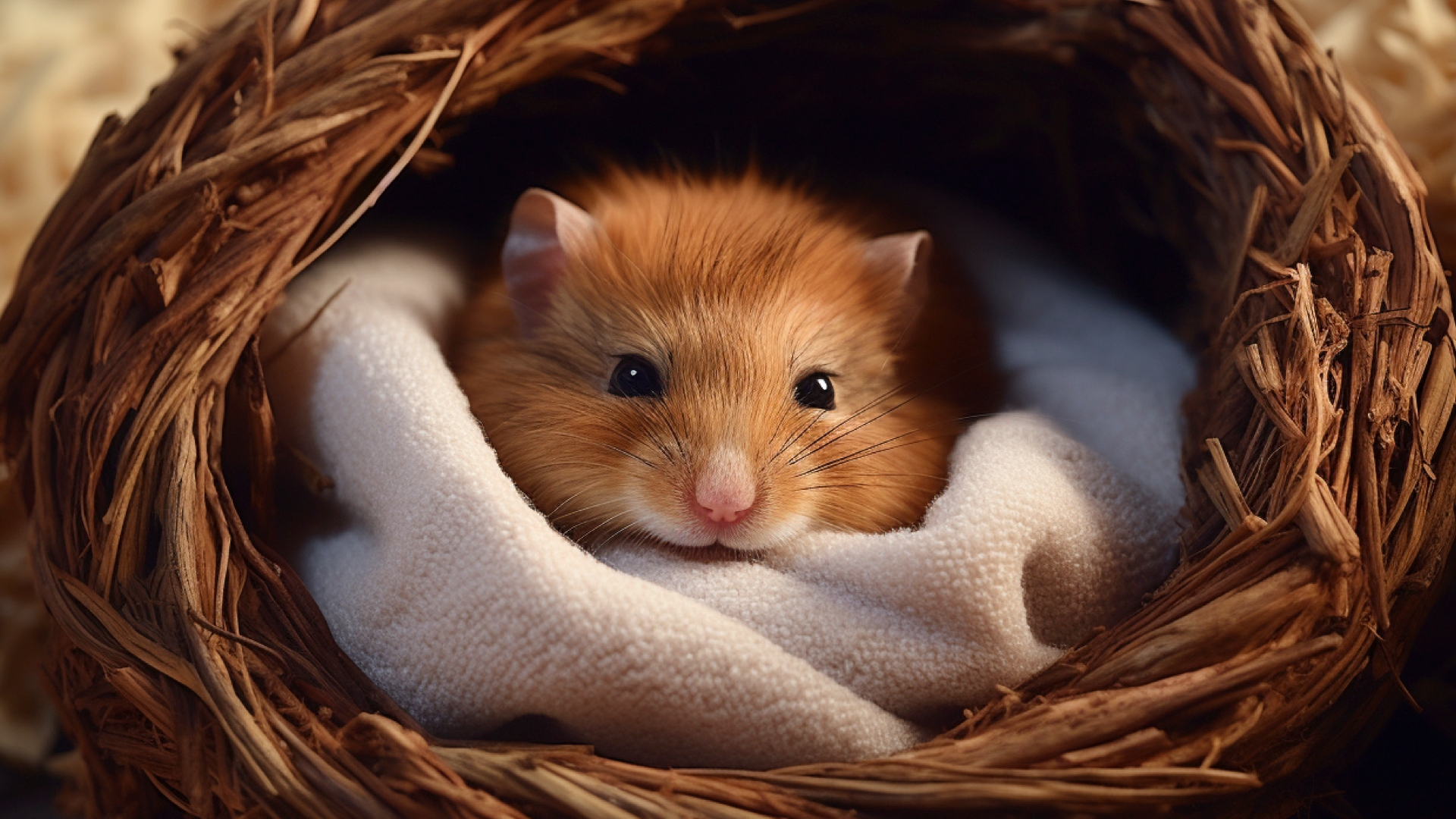Night Owls: Decoding the Nocturnal Habits of Hamsters:
Summary:
In this exploration of the nocturnal habits of hamsters, we've delved into the fascinating world of these night-loving creatures. From the biology that drives their preference for moonlit activity to the typical behaviors they exhibit when the lights go out, we’ve uncovered the science behind their nightly escapades. We’ve also discussed the importance of a proper sleep cycle for hamsters and how pet owners can adapt their schedules and environments to accommodate a nocturnal pet. With tips for bonding and debunking common myths, this article sheds light on the endearing and natural nocturnal habits of hamsters, offering insights for current and prospective hamster owners alike.


- The Biology Behind Hamster’s Nighttime Activity
- Typical Nighttime Behaviors of Hamsters
- How Light Affects Hamster Activity
- The Importance of a Proper Sleep Cycle for Hamsters
- Adapting Your Schedule for a Nocturnal Pet
- Creating a Nighttime-Safe Environment for Hamsters
- The Impact of Nocturnal Habits on Hamster Health
- Tips for Bonding with Your Nocturnal Friend
- Debunking Myths About Hamster Nocturnality
As the clock strikes midnight and most of the world is tucked into bed, hamster owners know all too well that their furry friend is just starting its day. These adorable, pint-sized pets are notorious night owls, but have you ever wondered why? In this article, we will unravel the mysteries of hamster nocturnality, diving into the biology, behaviors, and practical implications of living with a pet that prefers the moon to the sun.
The Biology Behind Hamster’s Nighttime Activity Hamsters are naturally nocturnal creatures, meaning they are most active during the night and sleep during the day. This behavior is deeply rooted in their biology and has evolved as a survival mechanism. In the wild, hamsters are prey animals. Venturing out in the darkness of night, when predators have limited visibility, increases their chances of avoiding danger. Additionally, the cooler nighttime temperatures are more comfortable for hamsters, as they are adapted to avoid the heat of the day.
Typical Nighttime Behaviors of Hamsters When the lights go out, hamsters come to life. You might notice your hamster running tirelessly on its wheel, foraging for food, grooming itself meticulously, or rearranging its bedding. These activities mimic the behaviors a wild hamster would engage in, such as searching for food, grooming to reduce scent markers for predators, and creating a comfortable and secure nest. It’s a busy night for these little creatures, and their energy seems boundless during these dark hours.
How Light Affects Hamster Activity Hamsters have a keen sensitivity to light, which plays a crucial role in regulating their internal clocks. Artificial lighting in a home can potentially disrupt a hamster’s natural sleep-wake cycle. It’s important for hamster owners to simulate a natural light cycle as much as possible, dimming lights in the evening and keeping their habitat in a relatively dark place during the day. This helps to maintain their natural rhythm and keeps them healthy and happy.
The Importance of a Proper Sleep Cycle for Hamsters Just like humans, hamsters need a consistent sleep cycle for optimal health. Disrupting a hamster’s sleep during the day can lead to stress, which in turn can result in health problems. It’s important to respect their sleep schedule and avoid waking them unnecessarily during the day. Creating a quiet and dark environment for your hamster during daylight hours is key to ensuring they get the rest they need.
Adapting Your Schedule for a Nocturnal Pet Owning a nocturnal pet like a hamster means that your active times may not naturally align. For those who are night owls themselves, this might work out perfectly. For others, it may require some adjustments. Consider setting aside time in the late evening or early morning, when your hamster is likely to be awake and active, for bonding and play. This way, you can interact with your pet when it is most alert and receptive.
Creating a Nighttime-Safe Environment for Hamsters To keep your nocturnal friend safe and happy, it’s important to create an environment that caters to its nighttime activity. This includes providing a secure and entertaining habitat with ample opportunities for exercise, such as a well-constructed wheel and space to explore. Also, consider the placement of the cage in a part of your home that is quiet during the day but allows for activity at night without disturbing your household.
The Impact of Nocturnal Habits on Hamster Health A hamster’s nocturnal lifestyle is more than just a quirky behavior—it’s essential for its mental and physical well-being. A hamster that is forced to adjust to a diurnal (daytime-active) schedule may exhibit signs of stress, such as over-grooming, reduced appetite, and lethargy. Respecting and accommodating your hamster’s natural nocturnal habits is a critical aspect of responsible and compassionate pet ownership.
Tips for Bonding with Your Nocturnal Friend Bonding with a nocturnal pet has its unique challenges, but with a little patience and understanding, it can be a deeply rewarding experience. Engage with your hamster during its active hours in the late evening or early morning. Speak softly and move slowly to avoid startling it. Offering treats and creating a play area outside of the cage can also encourage positive interaction and help to build trust between you and your furry friend.
Debunking Myths About Hamster Nocturnality There are many misconceptions about hamsters and their nocturnal habits. One common myth is that hamsters can be trained to be active during the day. While hamsters may adjust slightly to the schedules of their owners, they are biologically wired to be most active at night, and attempting to change this can lead to stress and health issues for the hamster.
As we've journeyed through the nighttime world of hamsters, it’s clear that their nocturnal nature is more than just a quirky trait—it’s a fundamental aspect of who they are. Understanding and embracing this aspect of their biology is key to fostering a healthy and happy life for your furry friend. So, as you hear the gentle whir of a hamster wheel in the midnight hours, you can now appreciate the natural instincts at play and cherish the unique bond you share with your nocturnal companion.
Please note that this article is intended to be informative and engaging, and should be used as a general guide for hamster care. Always consult with a veterinarian for specific advice regarding the health and well-being of your pet.


